

| Ten common Nottinghamshire moths by month |
| July |
| The mothing year really reaches
its peak in terms of number of species and catch totals
during July. For the beginner, numbers can often be
overwhelming and many easy to identify micromoths are
left unrecorded, due to the incorrect belief that most
are impossible to identify. Photographing the species you don't recognise (or cannot immediately identify) the following day, should really be standard procedure by now and this practice helps enormously with micromoths. |
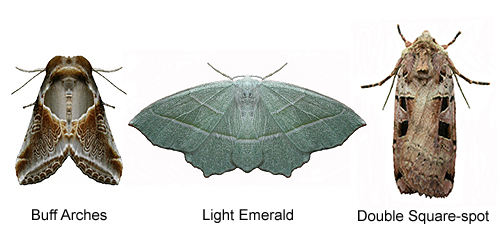 |
|
| .... | ||
| As a rule, photograph
the larger moths (macros) from above and smaller moths
(micros) from the side and in natural light. This will
enable a better chance of correct identification, if you
send your photographs to others for identification help. Once again, finding ten species which are most likely to be attracted to an MV light operated in an urban garden is difficult as there are som many, so we have included a good selection of other commonly caught moths a recorder can expect. |
||
| 20.012 .... B&F 0411 .... Argyresthia goedartella (Linnaeus, 1758) |
||
| Status .....A widespread moth in Nottinghamshire, often occuring in large numbers in wooded areas containing Birch. Also regularly found in gardens. | ||
| .... | ||
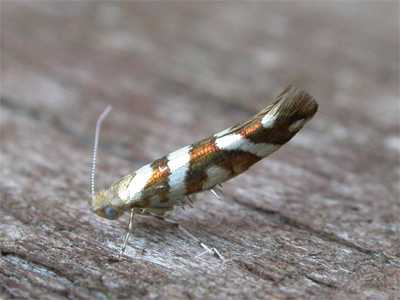 |
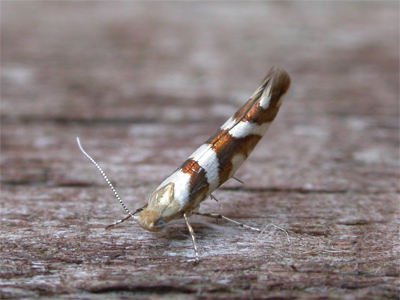 |
|
| 63.038 .... B&F 1405 .... Mother of Pearl Pleuroptya ruralis (Scopoli, 1763) |
||
| Status .....Very common throughout Nottinghamshire and regularly attracyed to light traps run in gardens. | ||
| .... | ||
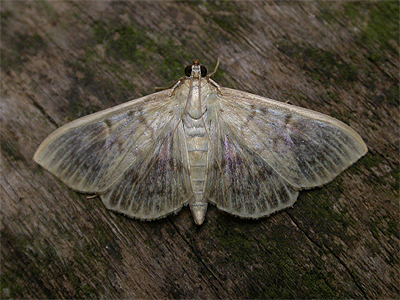 |
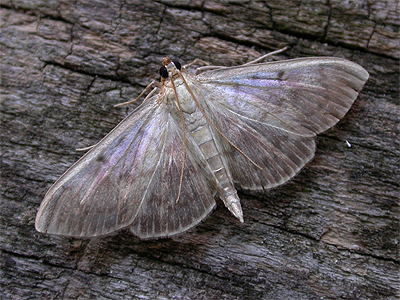 |
|
| 65.009 .... B&F 1653 .... Buff Arches Habrosyne pyritoides (Hufnagel,
1766) |
||
| Status .....Widespread and common in Nottinghamshire. | ||
| .. | ||
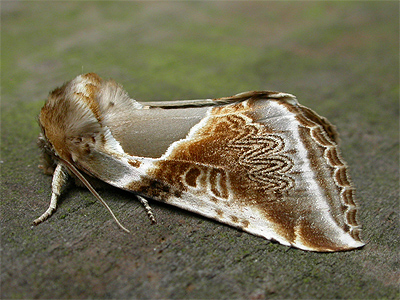 |
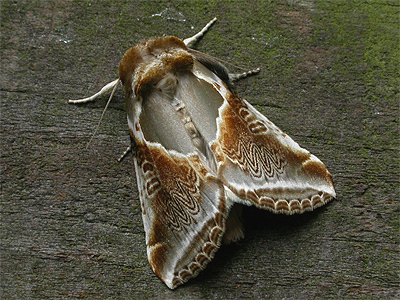 |
|
| 66.010 .... B&F 1640 .... Drinker Euthrix
potatoria (Linnaeus, 1758) |
||
| Status .....Common and widespread throughout Nottinghamshire. | ||
| .. | ||
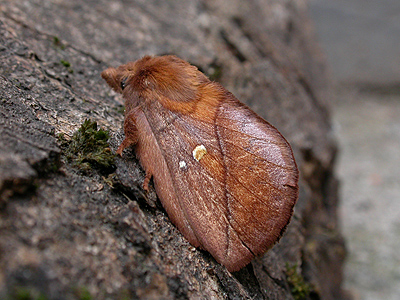 |
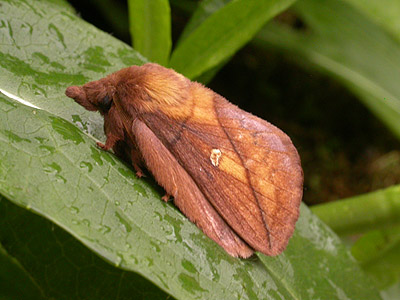 |
|
| 69.006 .... B&F 1976 .... Privet Hawk-moth Sphinx ligustri (Linnaeus, 1758) |
||
| Status .....This moth is still on the increase in Nottinghamshire, with a gradual westerly spread from south-east Nottinghamshire and the Newark area over the past 20 years or so. Larvae can be easy to find on roadside hedgerows containing Privet anywhere east of Ollerton. | ||
| .... | ||
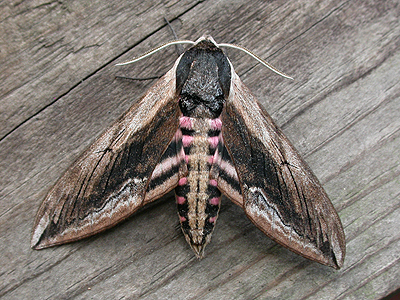 |
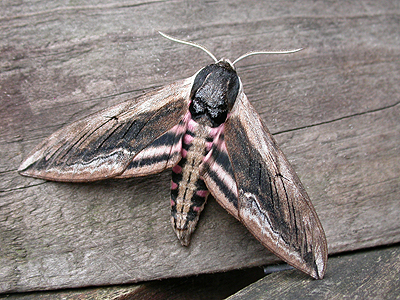 |
|
| 70.016 .... B&F 1713 .... Riband Wave Idaea aversata (Linnaeus,
1758) |
||
| Status .....Very common throughout Nottinghamshire. A non-banded form known as I. aversata remutata is usually the more common. | ||
| ..... | ||
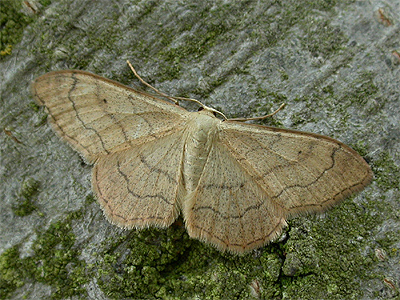 |
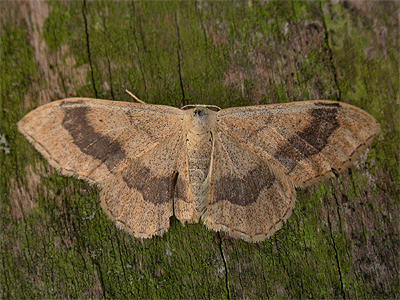 |
|
| 70.207 .... B&F 1887 .... Clouded Border Lomaspilis marginata (Linnaeus, 1758) |
||
| Status .....Fairly common and widespread across most of Nottinghamshire, although it seems not to occur in some parts of the county. It is easily attracted to MV light traps operated in woodland. | ||
| ... | ||
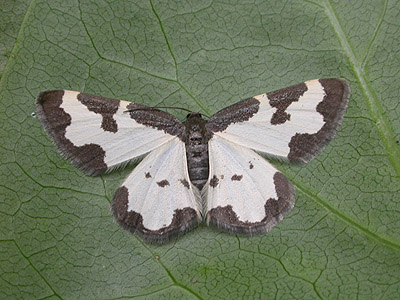 |
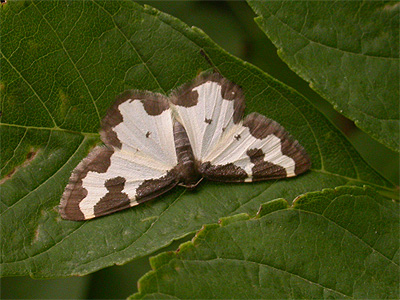 |
|
| 72.013 .... B&F 2030 .... Yellow-tail Euproctis similis (Fuessly,
1775) |
||
| Status .....Common throughout Nottinghamshire. The larva is conspicuous and often found on Hawthorn. | ||
| .... | ||
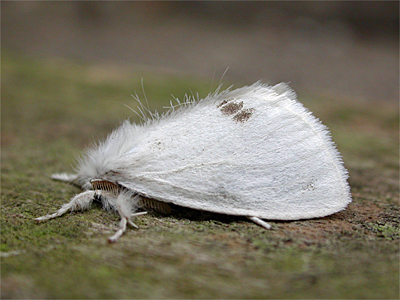 |
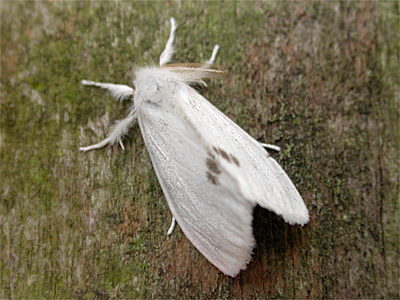 |
|
| 73.361 .... B&F 2128 .... Double Square-spot Xestia triangulum (Hufnagel, 1766) |
||
| Status .....Certainly a common moth at both Eakring and Sherwood Forest, but appears to be absent from many south-eastern parts of the county. | ||
| ...... | ||
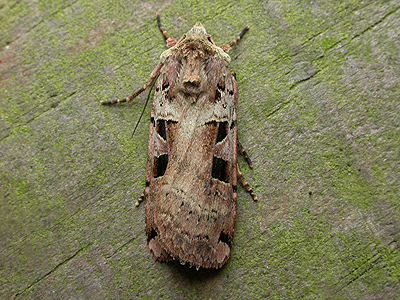 |
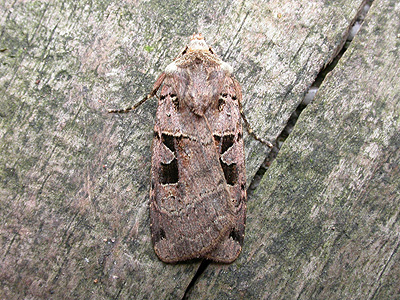 |
|
| 73.325 .... B&F 2092 .... Shuttle-shaped Dart Agrotis puta (Hübner,
1803) |
||
| Status .....Widespread and commonly recorded at most Nottinghamshire sites. | ||
| .... | ||
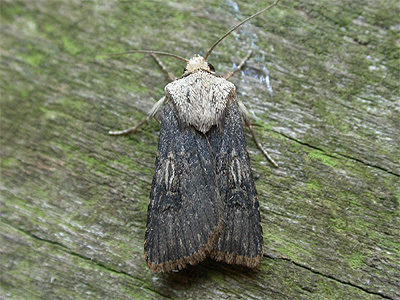 |
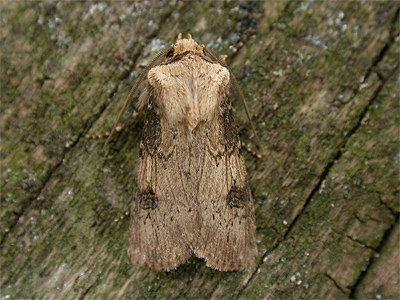 |
|
| Can't find your moth? Some other moths often recorded at MV light during July |
| .... |
| The following moths are also likely to occur during the month, although some may be more habitat specific and less likely to be recorded from suburban gardens. The number of potential species is considerably higher than the total shown here. |
| .... |
| Common moths often recorded during the day |
| ..... |
| The following moths can often be encountered during daylight in July. Some are active daytime fliers and others are often readily disturbed from vegetation. |
| ..... |